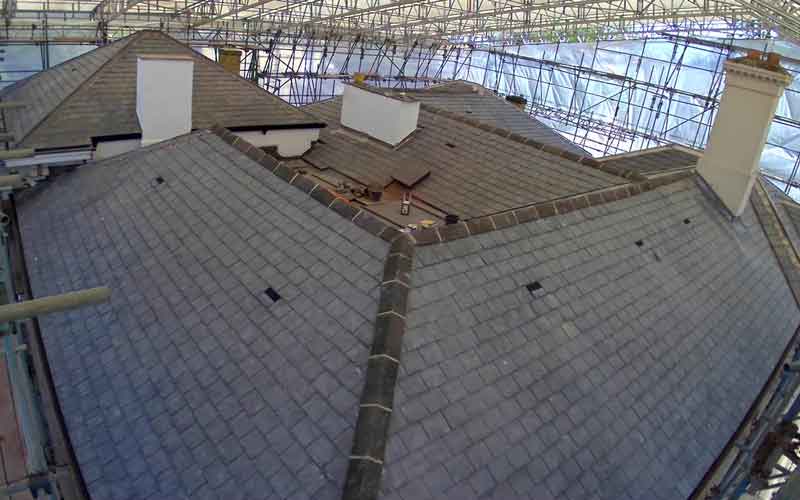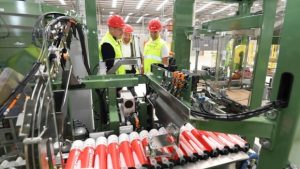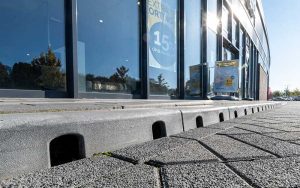The reroof, in Welsh Slate, of a Grade II listed house that doubles as a healthcare building, is in the running for a national award.
Stoic Roofing and Construction’s work on Springfield House at Northampton General Hospital has put the specialist contractor in the eight-strong shortlist for “Best use of a heritage roof” in the 2021 Pitched Roofing Awards*.
The mid-19th Century stucco villa in Italianate style, next to the entrance of A&E in Cliftonville, is now used for out of hours urgent care but the original roof of Welsh Slate, part of the Breedon group, had reached the end of its serviceable life after more than 150 years.
A like-for-like replacement was required for Listed Building Consent, and this meant 441m2 of Welsh Slate’s 500mm by 300mm Penrhyn Heather Blues from the manufacturer’s main quarry in North Wales.
Property consultants Ridge and Partners were engaged by the hospital trust to design and procure the roof refurbishment works which included increased insulation to improve energy efficiency and reduce carbon emissions.
Ridge associate (chartered building surveyor) Neil Thompson said: “The Welsh Slate was essentially a requirement of Listed Building Consent, but it is also a quality product. Whilst alternatives may have been possible, Welsh Slate was the only real comparable product that would have satisfied them.”
A top hat/temporary roof was utilised to ensure the healthcare services could remain operational throughout the contract with no risk of water ingress as a result of the roof being stripped.
The reroof took Stoic five months to complete during Covid restrictions and involved counter battening, breather membrane, support trays and fascia vents, slate vents and adaptors, rooflights and moulded gutters around multiple hips and valleys, and Code 4-7 lead for the flat roof areas.
Director Richard James said: “Welsh Slate was the only option and Penrhyn Heather Blue slates were chosen as the closest match to the existing roof slates.”
He added: “The building was occupied throughout so careful management was needed to ensure disruption was kept to a minimum and that there was no impact on the services below.
“There were plenty of unknowns on the job prior to erecting the scaffolding. Although we found some details that needed re-designing, we kept all costs well within the client’s budget. We even managed to make some savings.
“The tight nature of the site, coupled with the requirement for a temporary roof, meant we had to schedule the different roofing elements carefully to ensure the whole programme came in on time. There were small flat roof sections, lead work and re-pointing works as well as the main re-slating, which all had to be carefully planned, not to mention timber repairs that had to be carried out once the roof was stripped back. But the overall programme was still met.”
He said: “We gave the building a new lease of life and a roof that should last another 100 years. We were very proud of this project which showcased a number of disciplines.”
Springfield House was formerly the home of a wine merchant and a coal merchant/town mayor before being acquired by Northampton Borough Council for education offices. It was then sold to Northampton Health Charitable Fund, who lease it to the NHS Trust.







